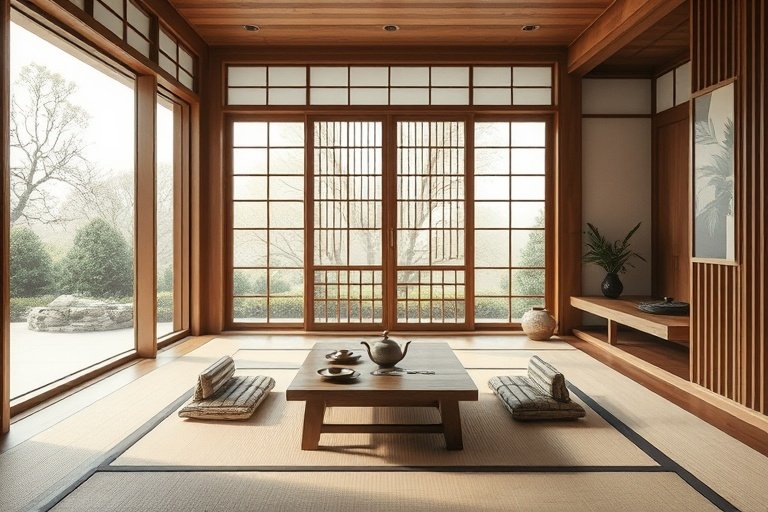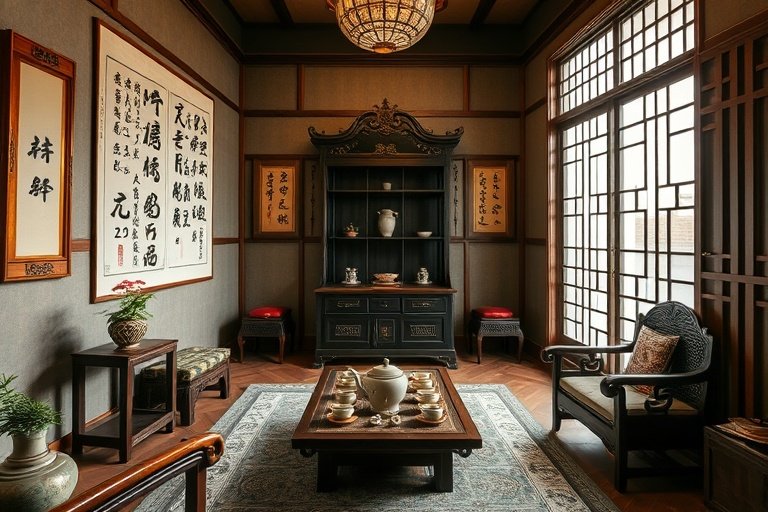Explore the Spiritual World of Tea
Tea is not just a beverage, but a way of life, a practice, and an art form. Through the tea ceremony, we can experience life's beauty and find inner peace.
Overview of Tea Ceremony
Tea ceremony, with its rich heritage, blends Eastern philosophy, aesthetics, and life wisdom into a precious cultural treasure

Chinese Tea Ceremony: Harmony, Respect, Purity, Tranquility
Chinese tea ceremony embodies Confucian principles of harmony with nature. The Classic of Tea by Lu Yu in the Tang Dynasty, recognized as the world's first tea treatise, systematically documented ancient Chinese tea-making techniques and culture.
Lu Yu's Tea Classic
Tea and Zen are One
Harmony, Respect, Purity, Tranquility

Japanese Tea Ceremony: The Beauty of Wabi-Sabi
Japanese tea ceremony, perfected by Sen no Rikyu, developed the wabi-sabi aesthetic based on harmony, respect, purity, and tranquility. This philosophy of finding beauty in simplicity and imperfection is reflected in tea room design, utensil selection, and ceremonial movements.
Sen no Rikyu
Wabi-Sabi Aesthetics
One Time, One Meeting

Global Tea Culture
Tea culture manifests differently worldwide. British afternoon tea emphasizes social etiquette and refined pastries; Moroccan mint tea symbolizes hospitality; Indian chai combines the wisdom of spices and herbs.
British Afternoon Tea
Moroccan Mint Tea
Indian Masala Chai
Our Most Frequently Asked Questions Explained
Our Top 5 Pottery Gift Ideas
The Inspiration Behind the Dust to Dust Necklace
History of Tea Ceremony
2737 BCE
Legend has it that Shennong discovered tea while tasting herbs, marking the beginning of human tea consumption. Tea was initially used as a medicinal plant for detoxification and refreshment, laying the foundation for future tea culture development.
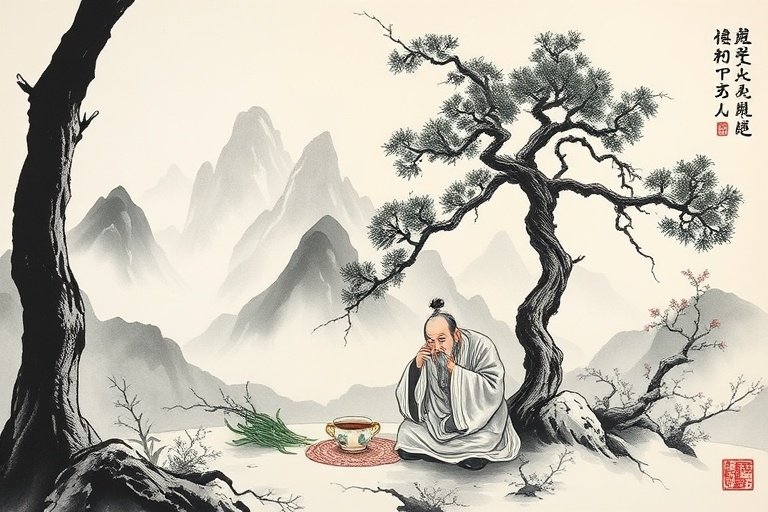
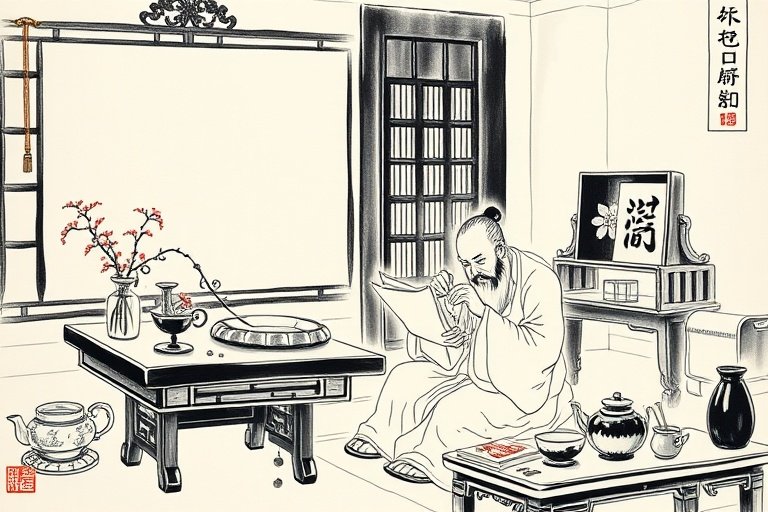
Tang Dynasty (618-907 CE)
Lu Yu wrote "The Classic of Tea," the world's first tea treatise, systematically summarizing ancient Chinese tea-making techniques and culture. The book details tea's origins, cultivation, processing, utensils, and brewing methods, earning it the title "The Bible of Tea."
Song Dynasty (960-1279 CE)
Tea culture reached its peak during the Song Dynasty, with the rise of whisked tea method, primarily using powdered tea. "Tea competitions" became an important activity among scholars, evaluating tea's color, aroma, taste, pattern, and foam, demonstrating the diversity of tea culture.
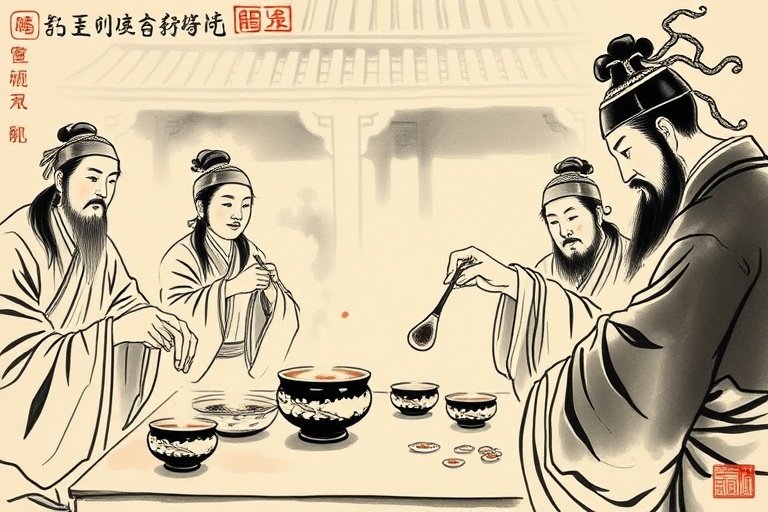
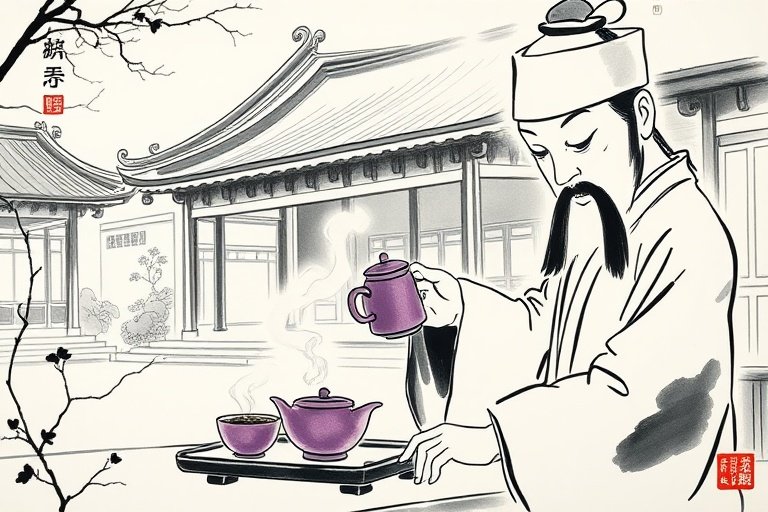
Ming Dynasty (1368-1644 CE)
The Ming Dynasty marked a crucial turning point in tea culture, as loose leaf tea replaced whisked tea as mainstream. Purple clay teapots gained popularity, perfectly complementing tea leaves. The era promoted "refined elegance" in tea appreciation, pursuing naturalness and simplicity in both teaware and tea art.
16th Century
Sen no Rikyu perfected Japanese tea ceremony, establishing the principles of "Harmony, Respect, Purity, and Tranquility." He advocated the Wabi-cha style, emphasizing natural simplicity in aesthetics, elevating tea ceremony to spiritual practice. This aesthetic philosophy was reflected in tea room architecture, utensil selection, and ceremonial movements.
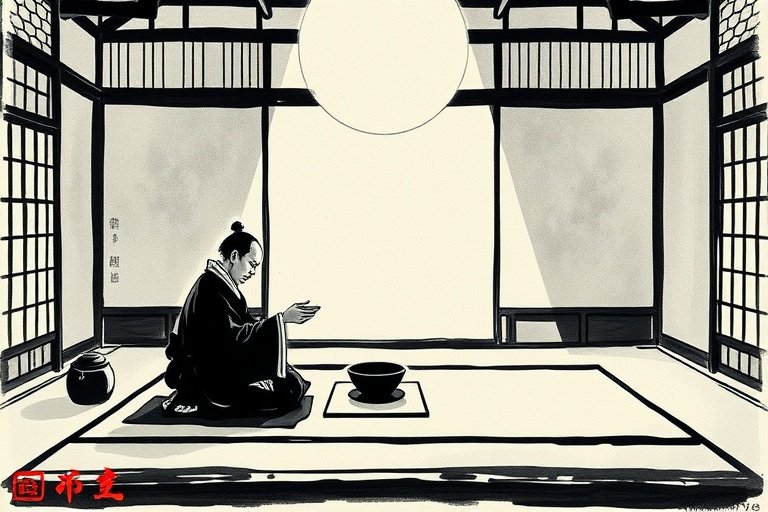
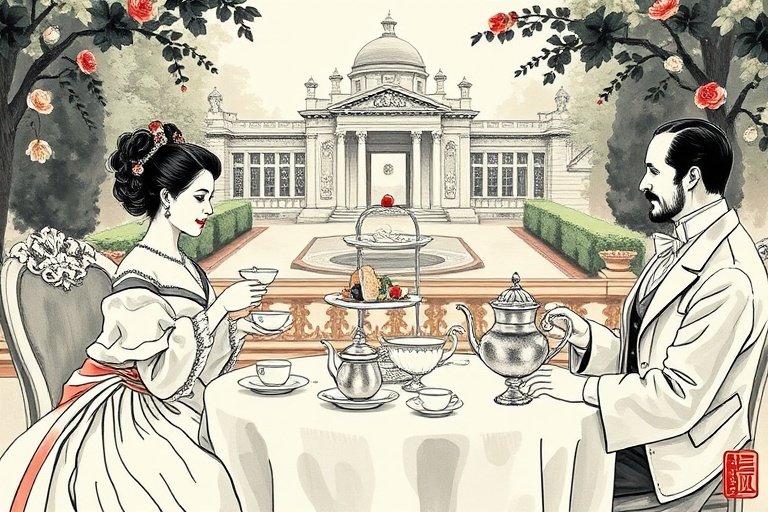
17th-18th Century
Tea reached Europe via maritime Silk Road, developing into unique afternoon tea culture in Britain. The British created the tradition of adding milk to tea and developed complete social etiquette including tea snacks and teaware, making tea an important medium for upper-class social interaction.
Modern Era
Globalization drives innovation through the fusion of Eastern and Western tea cultures. Modern tea culture maintains traditional essence while incorporating contemporary elements, developing new tea beverages and appreciation methods. Tea has transcended being merely a beverage to become a lifestyle that integrates health, mindfulness, and social interaction.

The Art of Tea Brewing
From Tea Leaves to Tea Liquor: A Step-by-Step Guide to Perfect Brewing
Creative Tea Pairings

Classic Fruit Pairings

Green Tea
Lemon
Orange
Grapefruit

Black Tea
Strawberry
Peach
Apple

Oolong Tea
Mango
Lychee
Passion Fruit

Milk Tea Combinations

Black Tea Base
Fresh Milk
Oat Milk
Cream

Matcha Base
Soy Milk
Almond Milk
Coconut Milk

Oolong Tea
Condensed Milk
Evaporated Milk
Rice Milk

Specialty Flavors

Sweet Additions
Honey
Brown Sugar
Date Syrup

Spice Blends
Cinnamon
Ginger
Star Anise

Herbal Infusions
Mint
Lavender
Rosemary
- Pairing Tips
- When pairing fruit tea, use fresh fruits instead of syrups or additives for a natural taste
- For milk tea preparation, first adjust the tea concentration to medium strength, then add dairy products according to personal preference
- When creating specialty flavors, carefully control ingredient portions to ensure the tea remains the main focus
- For cold-brew tea with fruits, pre-chill the fruits to maintain texture and quickly lower the temperature
The Art of Traditional Green Tea Brewing
Green tea preserves the natural flavor of tea leaves. Gentle brewing at low temperatures is essential to reveal its fresh and crisp characteristics.
Brewing Floral Tea in Gaiwan
Floral tea is a reprocessed tea made by combining tea leaves with various fresh flowers. Proper water temperature and steeping time are crucial for achieving the perfect harmony between floral and tea fragrances.
Brewing Pu-erh Tea in Purple Clay Teapot
Pu-erh tea has a long history, divided into raw and ripe types. Brewing in purple clay teapots better reveals its unique aged aroma and rich texture.
Western-Style Black Tea Brewing
Black tea is fully fermented with a mild character, suitable for Western-style brewing. Milk or lemon can be added according to personal preference.
Brewing White Tea in Gaiwan
White tea is one of the least processed teas, preserving the natural flavor of tea leaves. Brewing requires gentleness and patience.
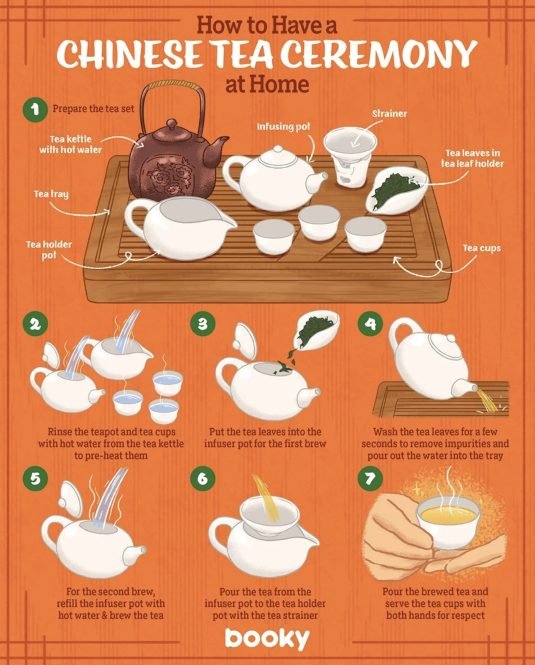
FAQ

How to Control Water Temperature?
Several methods to control water temperature:
- When pairing fruit tea, use fresh fruits instead of syrups or additives for a natural taste
- For milk tea preparation, first adjust the tea concentration to medium strength, then add dairy products according to personal preference
- When creating specialty flavors, carefully control ingredient portions to ensure the tea remains the main focus
- For cold-brew tea with fruits, pre-chill the fruits to maintain texture and quickly lower the temperature

How Many Times Can Different Teas Be Steeped?
Steeping endurance varies by tea type:

Green Tea
2-3 infusions

Black Tea
3-5 infusions

White Tea
5-7 infusions

Oolong Tea
5-8 infusions

Pu-erh Tea
10-20 infusions
- Note: Higher quality teas generally have better steeping endurance. Aged white tea and pu-erh tea can often be steeped more times than indicated.

How Many Times Can Different Teas Be Steeped?

Green Tea
- Bright, vibrant color
- No mold or impurities

Aroma
- Distinct fresh fragrance
- No off-putting odors

Texture
- Dry to touch
- Non-sticky leaves

Brewed Tea
- Clear liquor
- Distinct aroma
- Note: Green tea typically has a shelf life of about 1 year, while Pu-erh tea can be aged indefinitely and often improves with time.

How to Store Tea Properly?

Container Selection
- Use ceramic or tin canisters
- Food-grade opaque containers
- Ensure airtight sealing

Environment Control
- Keep dry and ventilated
- Avoid direct sunlight
- Room temperature storage

Categorized Storage
- Store different types separately
- Isolate strongly scented teas
- Prevent flavor mixing
- Note: Green tea typically has a shelf life of about 1 year, while Pu-erh tea can be aged indefinitely and often improves with time.

How to Store Tea Properly?

Purple Clay Teapot (Yixing)
- Rinse with clean water only
- Never use detergent
- Regular seasoning required

Porcelain Ware
- Gentle detergent allowed
- Avoid temperature shock
- Handle with care to prevent impacts

Glass Teaware
- Use baking soda for tea stains
- Special glass cleaner recommended
- Regular descaling needed

Silver Teaware
- Use specialized silver polish
- Baking soda solution for cleaning
- Regular polishing maintenance
General Care Tips:
Clean immediately after use
Keep teaware dry when storing
Avoid prolonged soaking
Regular maintenance extends lifespan
Tea Setting Design and Arrangement
Create your poetic tea setting, making every tea tasting a beautiful aesthetic experience
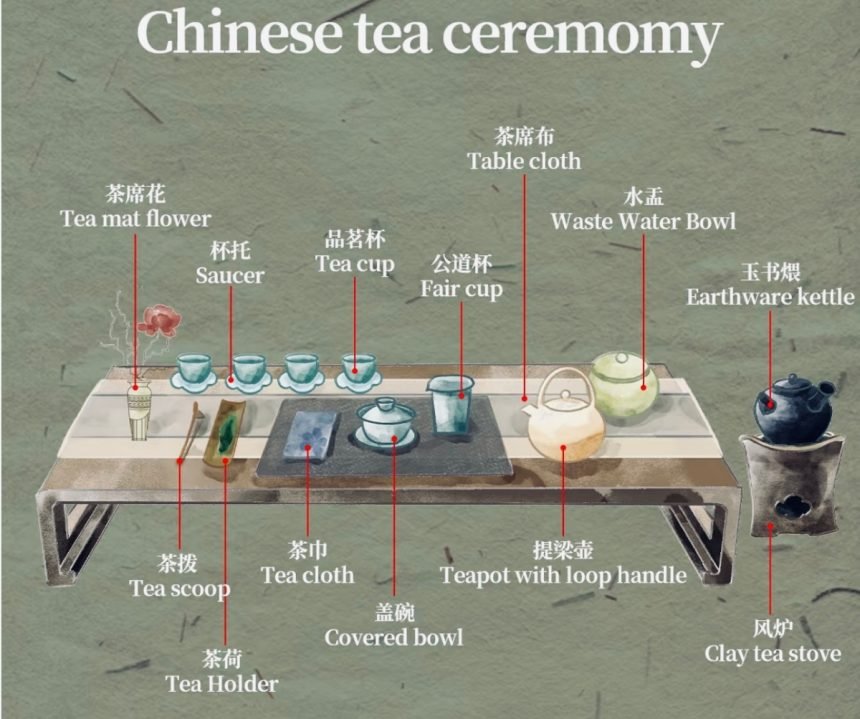
History of Tea Ceremony

Main Tea Vessels
The core of tea setting includes teapots, gaiwan, or cups. Choose appropriate vessels based on tea type. Purple clay teapots suit oolong and pu-erh, gaiwan suits all types, and glass cups are ideal for visually appealing teas.
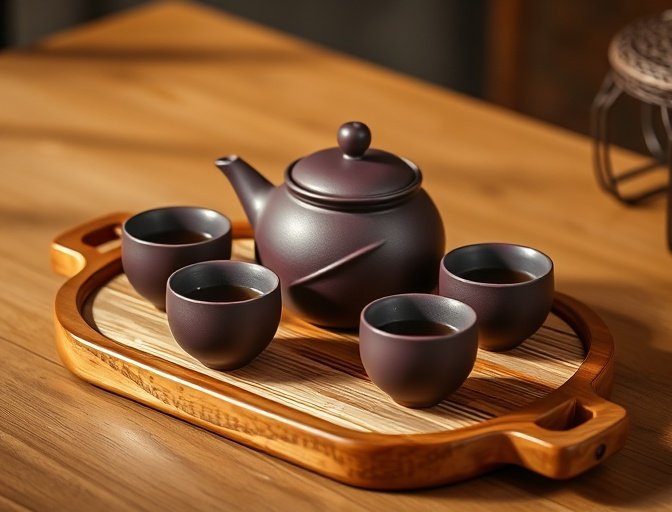
紫砂壶
盖碗
玻璃杯

Tea Accessories
Including tea scoop, tea needle, tea strainer, fair cup, and tea tray. These tools assist in tea preparation, demonstrating the precision and sophistication of tea ceremony. Arrange them in order of use for convenience.
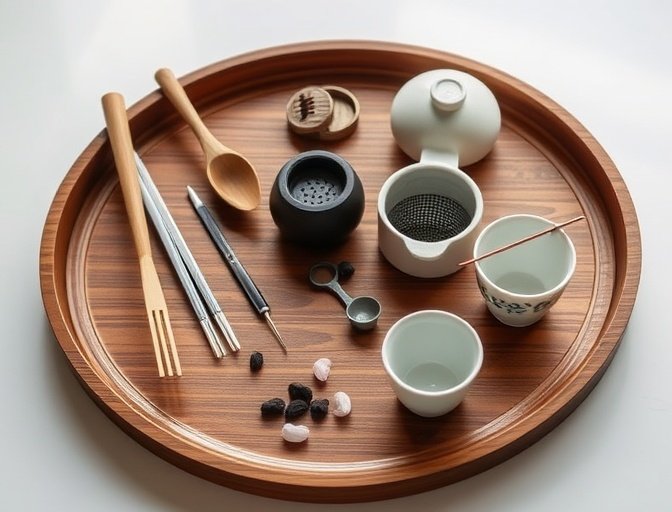
茶则
茶针
公道杯

Flower Vases
Add vitality and seasonal touch to the tea setting. Choose elegant, understated flowers like plum blossoms, orchids, or small chrysanthemums. The vase should complement the tea set style and is typically placed to one side.

梅花
兰花
水仙

Incense and Tea Snacks
Use subtle fragrances like sandalwood or agarwood to enhance ambiance. Choose simple snacks that won't overpower tea flavors, such as walnut cookies or mung bean cakes, placed at easily accessible edges of the tea setting.

檀香
茶点
香炉
Tea Setting Layout Principles

Main Tea Vessels
The core of tea setting includes teapots, gaiwan, or cups. Choose appropriate vessels based on tea type. Purple clay teapots suit oolong and pu-erh, gaiwan suits all types, and glass cups are ideal for visually appealing teas.

Tea Accessories
Including tea scoop, tea needle, tea strainer, fair cup, and tea tray. These tools assist in tea preparation, demonstrating the precision and sophistication of tea ceremony. Arrange them in order of use for convenience.

Flower Vases
Add vitality and seasonal touch to the tea setting. Choose elegant, understated flowers like plum blossoms, orchids, or small chrysanthemums. The vase should complement the tea set style and is typically placed to one side.

Incense and Tea Snacks
Use subtle fragrances like sandalwood or agarwood to enhance ambiance. Choose simple snacks that won't overpower tea flavors, such as walnut cookies or mung bean cakes, placed at easily accessible edges of the tea setting.

